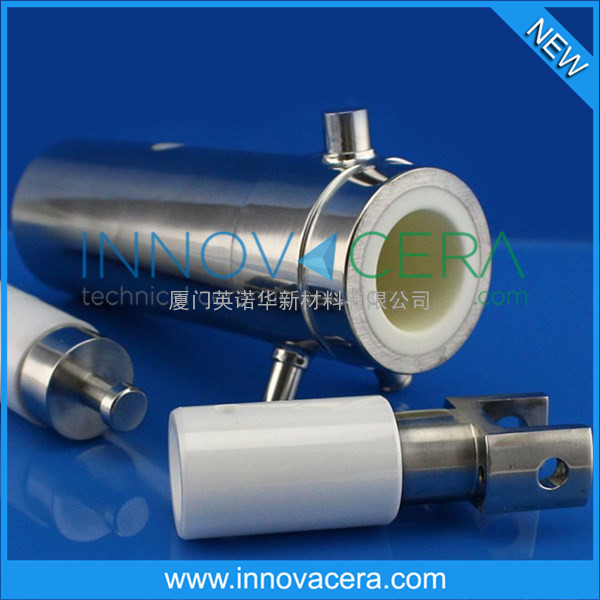Acid Corrosion Resistance Alumina/Zirconia Precise Ceramic Pump For Fluid Control Solution/Innovacera
Keywo***: Valveless Ceramic Pump,Valveless Ceramic Piston,Valveless Ceramic Plunger,Valveless Ceramic Suspension Pump,Valveless Piston Pump,Valveless Plunger Pump,Fine Ceramic Rotary,Fine Ceramic Filling Pump,Fine Ceramic Metering Pump,Precise Ceramic Pump
1. Ceramic Plunger Pump Introduction:
* mated, serialized piston piston/valve/cylinder sets piston/valve/cylinder sets
* withstand routine autocl***ing and sterilization procedures
* chemically inert most acids, alkalines or solvents do not affect the ceramics
* extremely hard resist abrasion and wear, low maintenance
* titanium end cap press fit onto piston - eliminates adhesive contamination problems
* flushing gland ***ailable to help eliminate binding issues with certain fluids
2. Ceramic Plunger Pump Features
Liquid non-polluting, High precision
Long service life, Very high surface finish
High hardness, Wear resistant
Particle release is extermely ***all
Water absorption as low as zero,
Minimal friction ,Minimal residual
Low thermal expansion coefficient
Inert Chemical stability, Acid orrosion resistance
Resistant to high temperature, Piston clearance fit more
Filling accuracy can be achieved online cleaning and sterilization
3 . More Information:
The ceramic plunger pump module incorporates a ceramic piston plunger valve cylinder set with housing. The housing for ceramic piston plunger valve cylinder sets are typically comprised of 316 Stainless Steel and Tefzel. Custom materials can be used and are ***ailable upon request. The ceramic piston plunger valve cylinder sets is sealed by the fit of the piston into the cylinder. The ceramic plunger pump modules are positive displacement mechani***s that do not contain external valves and can run for hundreds of milli*** of cycles without measurable wear.
4. Properties of Alumina Material
| Item | Test Condition | Unit&Symbol | 95% Al2O3 | 99% Al2O3 | 99.7% Al2O3 |
| The main chemical ingredient | Al2O3 | Al2O3 | Al2O3 | ||
| Bulk Density | g/cm3 | 3.6 | 3.89 | 3.96 | |
| Maximum Use Temperature | 1450°C | 1600°C | 1650°C | ||
| Water absorption | % | 0 | 0 | 0 | |
| ROHS Hardness | ≥85 | ≥89 | ≥89 | ||
| Flexural strength | 20° C | MPa (psi x 103) | 358 (52) | 550 | 550 |
| Compressive Strength | 20° C | MPa (psi x 103) | 2068 (300) | 2600(377) | 2600(377) |
| Fracture Toughness | K(I c) | Mpa m1/2 | 4 - 5 | 5.6 | 6 |
| Coefficient of thermal expansion | 25-1000° C | 1X 10-6/°C | 7.6 | 7.9 | 8.2 |
| Coefficient of thermal conductivity | 20° C | W/m °K | 16 | 30 | 30.4 |
| Thermal Shock Resistance | Tc | °C | 250 | 200 | 200 |
| Dielectricity c***tant | 1MHz.25°C | 9 | 9.7 | 9.7 | |
| Dielectric strength | ac-kV/mm (ac V/mil) | 8.3 (210) | 8.7 (220) | 8.7 (220) | |
| Volume Resistivity | 100°C | ohm-cm | > 1013 | > 1014 | > 1014 |

